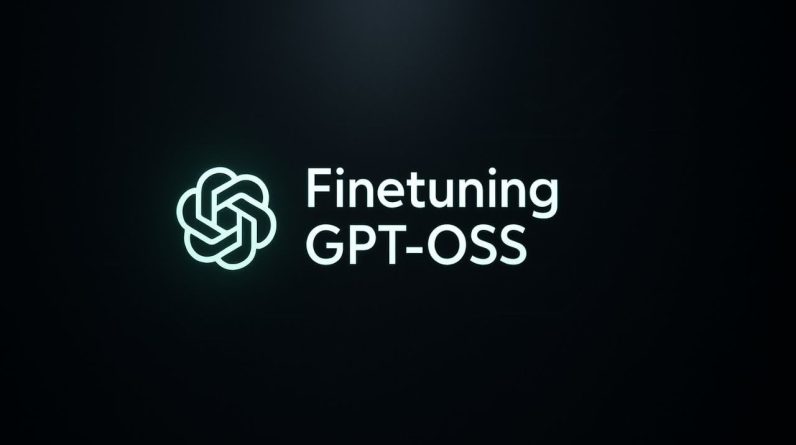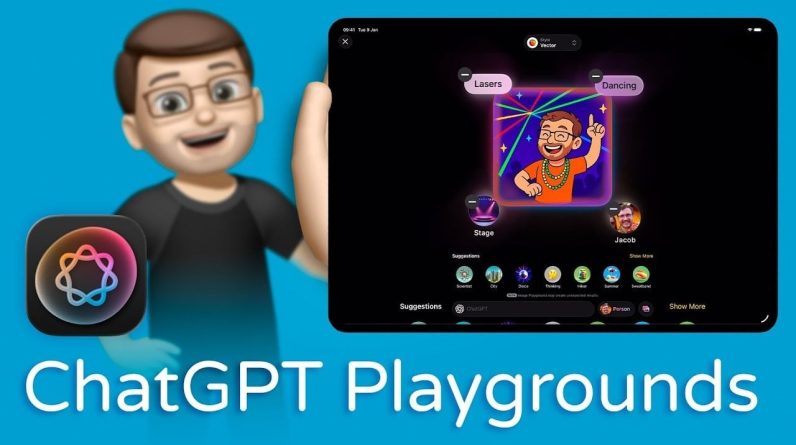
What if you could take a innovative language model like GPT-OSS and tailor it to your unique needs, all without needing a supercomputer or a PhD in machine learning? Fine-tuning large language models often feels like an intimidating task, especially for beginners or developers working with limited resources. But here’s the good news: with the right techniques, such as LoRa fine-tuning and quantization, you can unlock the potential of GPT-OSS without breaking the bank or frying your GPU. Imagine transforming a 20-billion-parameter model into a finely tuned tool that understands your specific tasks and datasets, all from the comfort of your modest hardware setup.
In this step-by-step beginner-friendly walkthrough, Rajan explains how to fine-tune GPT-OSS AI models efficiently, even on a T4 GPU instance. From setting up your environment and preparing your dataset to using advanced techniques like low-rank adaptation, this guide equips you with the tools and knowledge to navigate the process confidently. Whether you’re an AI developer refining your skills or a curious newcomer eager to explore the possibilities of large language models, this overview will demystify the technicalities and help you achieve results. By the end, you’ll not only understand the mechanics of fine-tuning but also gain insights into optimizing performance for real-world applications. Because sometimes, the most powerful innovations come from mastering the details.
Fine-Tuning GPT-OSS Guide
TL;DR Key Takeaways :
- Fine-tuning GPT-OSS on a T4 GPU instance is achievable with efficient techniques like LoRa fine-tuning and quantization, optimizing performance while managing limited hardware resources.
- Setting up the environment involves installing essential tools like PyTorch, the Transformers library, and additional dependencies to enable seamless interaction with the model and dataset.
- Loading a quantized version of GPT-OSS is crucial for reducing memory usage and making sure compatibility with hardware constraints, especially for GPUs with limited capacity.
- LoRa fine-tuning focuses on specific model components, reducing computational overhead while maintaining performance, making it ideal for resource-constrained setups.
- Preparing a high-quality dataset, configuring training parameters, and monitoring metrics during the training process are key to achieving effective fine-tuning and making sure the model is ready for deployment.
1: Setting Up Your Environment
The first step in fine-tuning GPT-OSS is configuring your environment for GPU-based computing. A T4 GPU instance is recommended due to its balance of affordability and performance. To set up your environment:
- Install the PyTorch framework, which serves as the backbone for training and inference tasks.
- Download the Transformers library, a vital tool for working with LLMs like GPT-OSS.
- Install additional dependencies such as tokenization libraries and dataset utilities to streamline the fine-tuning process.
These tools form the foundation of your workflow, allowing seamless interaction with the model and dataset. Proper setup ensures that your system is ready to handle the computational demands of fine-tuning.
2: Loading the GPT-OSS Model
GPT-OSS, with its 20-billion parameters, requires careful handling to fit within the memory constraints of a GPU. To optimize memory usage, it is essential to load a quantized version of the model. Quantization reduces the model’s memory footprint by representing weights with lower precision, such as 8-bit integers. Follow these steps:
- Download a quantized version of GPT-OSS from a trusted source to minimize memory usage.
- Monitor GPU memory usage during model loading to prevent runtime errors.
- Verify compatibility between the model, hardware, and software to ensure smooth operation.
This step is critical for making sure stability and efficient resource utilization, especially when working with hardware that has limited memory capacity.
Fine-Tune AI Models Like a Pro on Modest Hardware
Explore further guides and articles from our vast library that you may find relevant to your interests in GPT-OSS Fine-Tuning.
3: Configuring Fine-Tuning with LoRa
LoRa (Low-Rank Adaptation) fine-tuning is a highly efficient method for adapting large models. Instead of updating all parameters, LoRa focuses on specific components such as key-query-value (KQV) and projection matrices. This targeted approach reduces computational overhead while maintaining performance. To configure LoRa fine-tuning:
- Define key parameters such as sequence length, rank, and scaling factors to tailor the model to your task.
- Customize settings to align with your dataset and specific use case.
- Optimize configurations to match your hardware constraints, making sure efficient resource usage.
By focusing on specific components, LoRa fine-tuning allows you to adapt the model effectively without requiring extensive computational resources.
4: Preparing Your Dataset
A well-prepared dataset is essential for successful fine-tuning. The quality and structure of your data directly impact the model’s performance. To prepare your dataset:
- Select a multilingual dataset from platforms like Hugging Face to ensure diverse language coverage.
- Split the dataset into training and validation sets to monitor performance during fine-tuning.
- Format prompts using predefined templates to maintain consistency across the dataset.
- Tokenize the dataset, converting text into a format compatible with the model’s vocabulary and sequence length requirements.
Proper dataset preparation ensures that the model can learn effectively and minimizes errors during the training process.
5: Running the Training Process
Once the model and dataset are ready, you can initiate the training process. Using a Supervised Fine-Tuning (SFT) trainer simplifies this step. Here’s how to proceed:
- Specify the model, tokenizer, dataset, and GPU settings in the trainer configuration to streamline the process.
- Run a limited number of training steps (e.g., 10 epochs) to test and refine the process.
- Monitor key metrics such as GPU usage and loss reduction to track progress and identify potential issues.
- Adjust parameters as needed to optimize performance and ensure the model meets your requirements.
This step allows you to refine the model for your specific task while keeping resource usage manageable.
6: Evaluating and Saving the Model
After completing the training process, it is crucial to evaluate the fine-tuned model to assess its performance. Use sample inputs to test its capabilities and identify areas for improvement. Once you are satisfied with the results:
- Save the fine-tuned model along with intermediate checkpoints and configuration files for future use.
- Document the training process and results to ensure reproducibility and assist future development.
- Prepare the model for deployment in production environments, making sure it is ready for real-world applications.
These steps ensure that the model is not only fine-tuned but also well-documented and ready for practical use.
Fine-tuning GPT-OSS on a T4 GPU instance is a systematic process that combines efficient techniques like LoRa fine-tuning and quantization with careful dataset preparation. By following these steps, you can adapt large language models to specific tasks without requiring extensive computational resources. This guide provides a practical framework for beginners and AI developers, empowering you to achieve your fine-tuning goals with confidence.
Media Credit: unknown Rajan
Filed Under: AI, Guides
Latest Geeky Gadgets Deals
If you buy something through one of these links, Geeky Gadgets may earn an affiliate commission. Learn about our Disclosure Policy.
Originally Appeared Here






